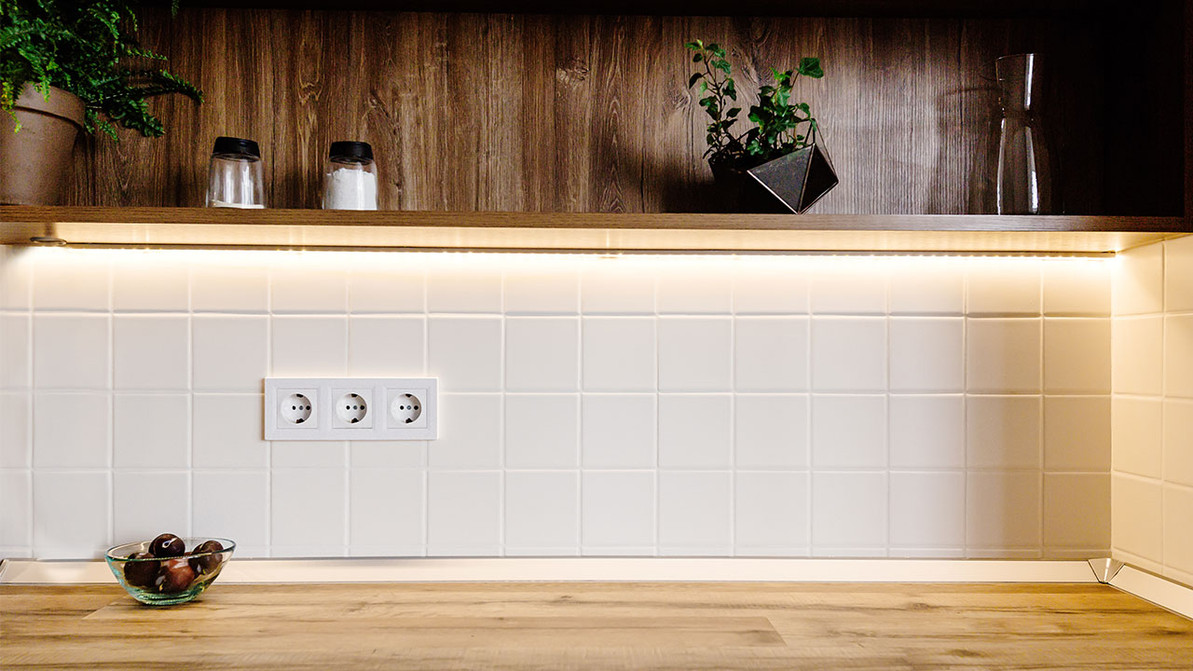LED Strip Lights: How to Add a Modern Touch to Your Living Spaces
LED strip lights have become a staple in modern home decor, offering flexibility and aesthetic charm. With their energy-efficient properties and easy installation, they seamlessly enhance the ambience, accentuate architectural elements and are perfect for DIY lighting projects. This article is a comprehensive guide to LED strip lights, encompassing product selection, creative ambient lighting techniques, installation tips, and safety precautions. This practical resource will equip you with the knowledge to harness the full potential of LED strip lights throughout your home.
The Basics of LED Strip Lights
LED strip lights are a versatile, contemporary lighting solution consisting of flexible strips embedded with light-emitting diodes (LEDs). These strips come in various types, including single-colour, RGB (Red, Green, Blue), and RGBW (Red, Green, Blue, White), offering a wide range of colour options to suit different preferences and atmospheres. They are also available in various lengths and densities, allowing for customisation to fit specific lighting needs and making them ideal for DIY lighting projects.
LED strip lights offer a variety of features and benefits, including:
- Versatility: LED strips come in different types and lengths, making them adaptable to various lighting needs.
- Colour Options: Available in single-colour, RGB, and RGBW options, allowing for customisation of ambience and mood.
- Energy Efficiency: LED technology ensures energy-efficient lighting, reducing electricity costs.
- Longevity: With a lifespan of up to 50,000 hours, LED strip lights require less frequent replacement compared to traditional lighting.
- Low Heat Emission: LEDs produce minimal heat, making them safe to touch and ideal for use in confined spaces.
- Dimmability: Many LED strips are dimmable, providing flexibility to adjust brightness levels according to preference.
- Remote Control/Smartphone Compatibility: Some LED strips can be controlled remotely or via smartphone apps, offering convenient operation and customisation.
- Easy Installation: Designed for simple installation, LED strip lights can be easily mounted or adhered to various surfaces.
- Transformative: LED strips can dramatically enhance the ambience of a space, creating dynamic, ambient lighting effects and highlighting architectural features.
Planning Your LED Strip Light Installation
Planning before purchasing and installing your LED strip lights is essential to ensure optimal aesthetics, performance and safety.
Selecting the Right Type
The first thing to consider when selecting LED strip lights is your desired light colour. Consider where you will install your strip lights and how you want to use them. As previously mentioned, strip lights are available in different colour versions:
- RGB LED Strip Lights: Ideal for adding vibrant and dynamic colours to any space, perfect for creating eye-catching accents, moods or ambient lighting in entertainment areas.
- RGBW LED Strip Lights: Combining RGB colours with white LEDs is great for versatile lighting applications, allowing users to switch between colourful ambience and functional white light for tasks such as reading or working.
- White LED Strip Lights: Perfect for providing bright and uniform illumination, suitable for task lighting in kitchens, bathrooms, and workspaces, and for architectural highlighting or under-cabinet lighting where colour-changing features are not needed. Consider this daylight LED strip offering three white tones between 3000k and 6000k.
Measuring and Cutting
Accuracy is key to achieving a seamless fit when measuring and cutting LED strip lights for installation. Begin by measuring the length of the space where the strip will be placed, ensuring to account for any corners or bends. It’s helpful to mark the cutting points along the designated areas of the LED strip using a pencil or marker.
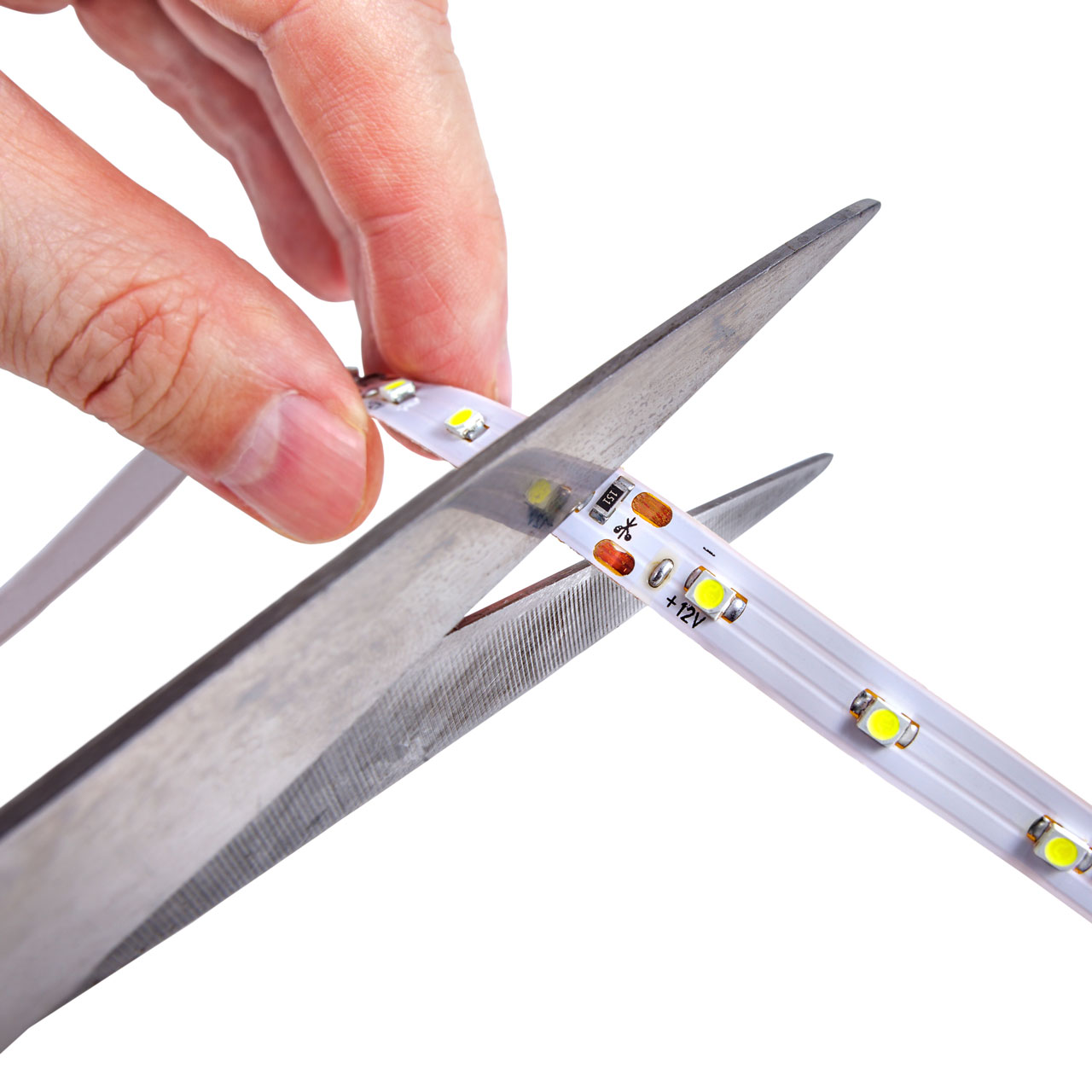
Use a craft knife or sharp scissors to trim the strip carefully along the marked lines when cutting. Remember to cut only at the designated cut points, typically indicated by copper pads or marks along the strip. To ensure safety, disconnect the power source before cutting and carefully handle the strips to avoid damaging the LEDs or the circuitry. Additionally, double-check the measurements before cutting to avoid any mistakes.
With proper measuring and cutting techniques, LED strip lights can be tailored to fit any space accurately and safely.
Power Requirements
Understanding the power requirements for LED strip lights is crucial for ensuring optimal performance and safety. LED strip lights require a specific amount of power, measured in watts, to operate effectively. First, determine the total length of the LED strip in meters to calculate the needed wattage. Next, identify the power consumption of the LED strip per meter, typically measured in watts per meter (W/m) and specified by the manufacturer. Multiply the strip length by the power consumption per meter to find the total wattage required.
Consider any additional factors such as voltage drop, which may necessitate a higher wattage power supply to compensate for decreased voltage over longer lengths of LED strip. It’s essential to select a power supply with a wattage rating equal to or greater than the calculated total wattage to ensure proper functionality and longevity of the LED strip lights. Always refer to the manufacturer’s specifications and guidelines for accurate power requirements and safe installation practices.
Creative Ways to Use LED Strip Lights in Your Living Spaces
LED strips are so versatile they can be used in all kinds of spaces for many different purposes. Consider these creative ways to use LED strips in your living spaces:
- Under Cabinet Lighting
Consider using LED strip lights as under cabinet lighting for a creative and modern touch in your kitchen or workspace. Installing these lights beneath cabinets provides practical illumination for tasks and adds a stylish flair to your space. LED strip lights are ideal for this use because they are compact, flexible, and easy to install. They allow versatile placement and customisation to suit various cabinet layouts and design preferences.
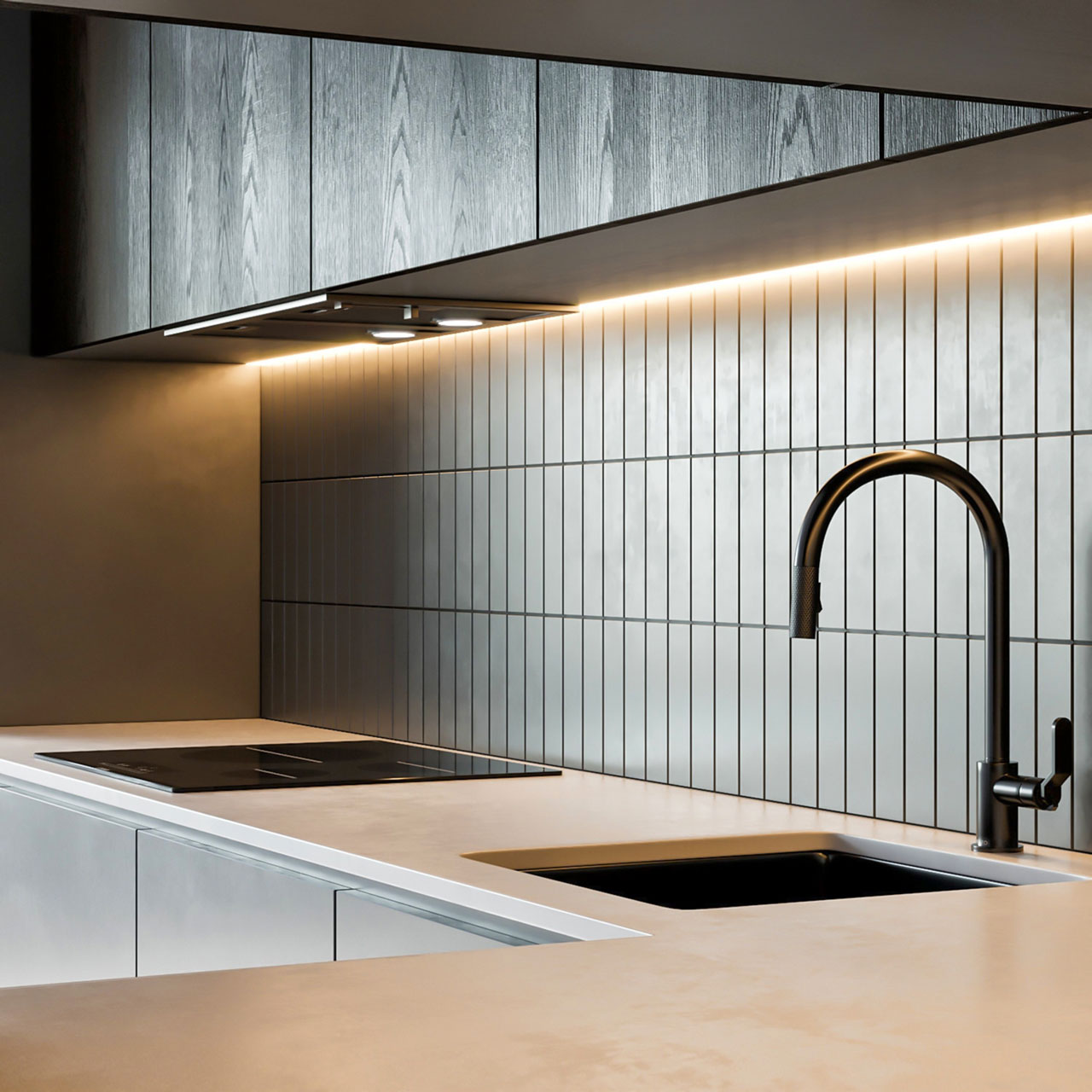
- Backlighting for TV’s and Monitors
For a subtle and visually appealing addition to your entertainment setup, try using LED strip lights as backlighting for TVs and monitors. Installing these lights behind your screen creates an ambient glow that reduces eye strain during prolonged viewing sessions while adding a stylish touch to your space. LED strip lights are perfect for this use as they’re compact, flexible, and easy to install, allowing you to customise the placement and create the perfect ambience for your viewing experience. Whether watching movies, gaming, or relaxing, LED strip lights can enhance the atmosphere and make your entertainment area more inviting.
- Accent Lighting for Shelves and Niches
Consider using LED strip lights for accent lighting on shelves and niches for a sophisticated and artistic touch in your home decor. Installing these lights along the edges or behind shelves can beautifully highlight your books, art pieces, or collectables, adding depth and visual interest to your space. LED strip lights are ideal for this use because they are versatile, allowing you to adjust the brightness and colour to suit the mood or theme of your room. Since they’re compact and easy to install, they’re perfect for highlighting specific items and creating a dynamic display in your home.
- Mood Lighting in Bedrooms
Use LED strip lights as mood lighting for a serene and inviting bedroom ambience. Installing them along the room’s perimeter or behind furniture creates a soft, cosy glow, perfect for unwinding after a long day. Choose warm white or soft pastel colours for tranquillity. Dimmable options allow adjusting brightness for different activities. Consider smart technology integration for wireless control via smartphone apps or voice commands. With LED strip lights, transform your bedroom into a soothing sanctuary for relaxation and rejuvenation.
- Illuminating Staircases
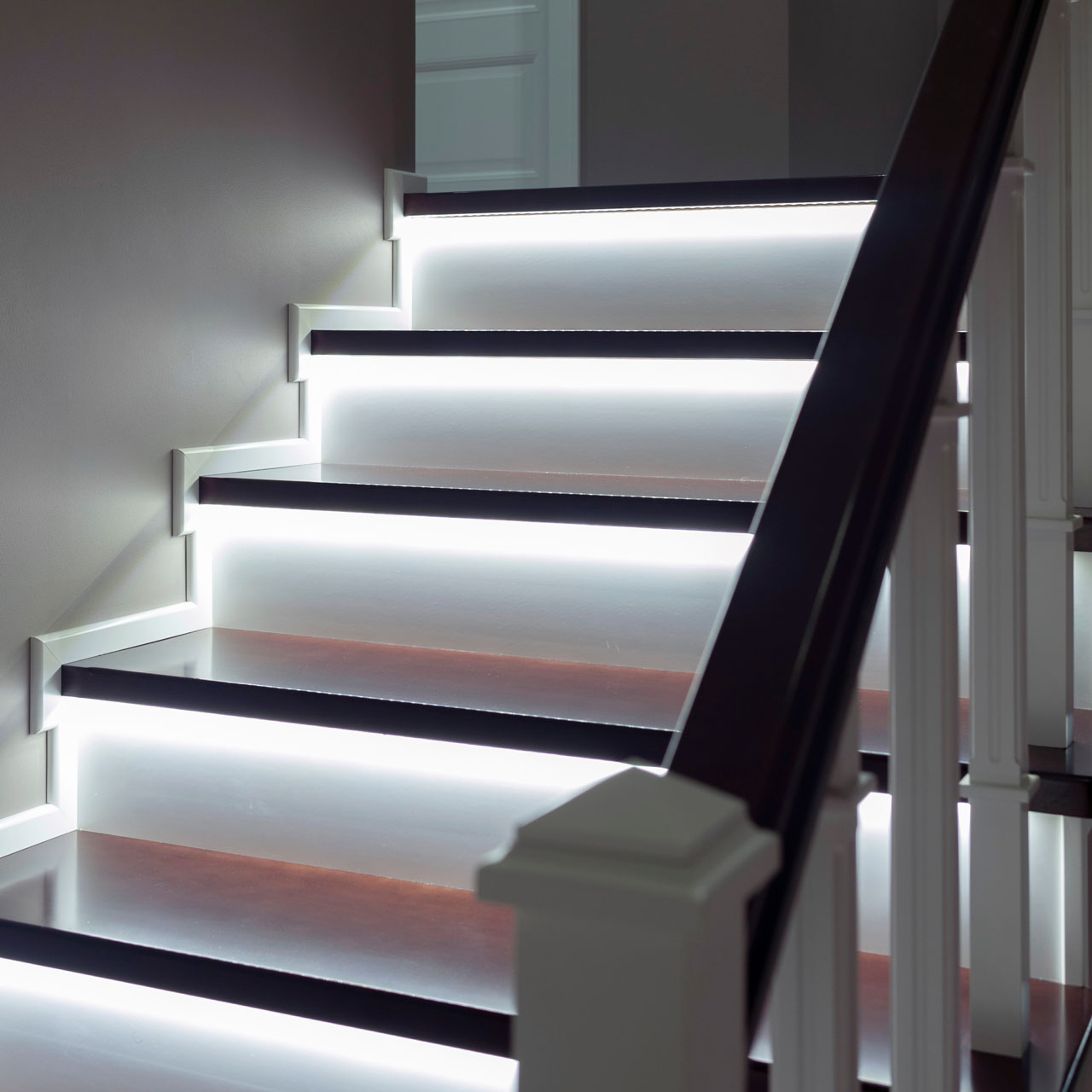
For a blend of safety and style in your home, consider using LED strip lights to illuminate staircases. Installing these lights along the edges of each step adds a touch of modern flair and enhances visibility, reducing the risk of accidents, especially at night. With LED strip lights, safety meets style, creating a well-lit and visually appealing staircase that adds charm to your home decor while ensuring your family’s and guests’ safety.
- Outdoor Spaces
Transform your outdoor spaces into inviting retreats with weatherproof LED strip lights. These versatile lights can illuminate patios, gardens, and pathways, adding functionality and ambience to outdoor gatherings. With their durable and waterproof design, LED strip lights are perfect for withstanding the elements, ensuring long-lasting enjoyment in all weather conditions. Whether you’re hosting a barbecue or simply relaxing under the stars, outdoor LED strip lights can create a warm and inviting atmosphere that enhances the beauty of your outdoor environment.
Installation Tips and Tricks
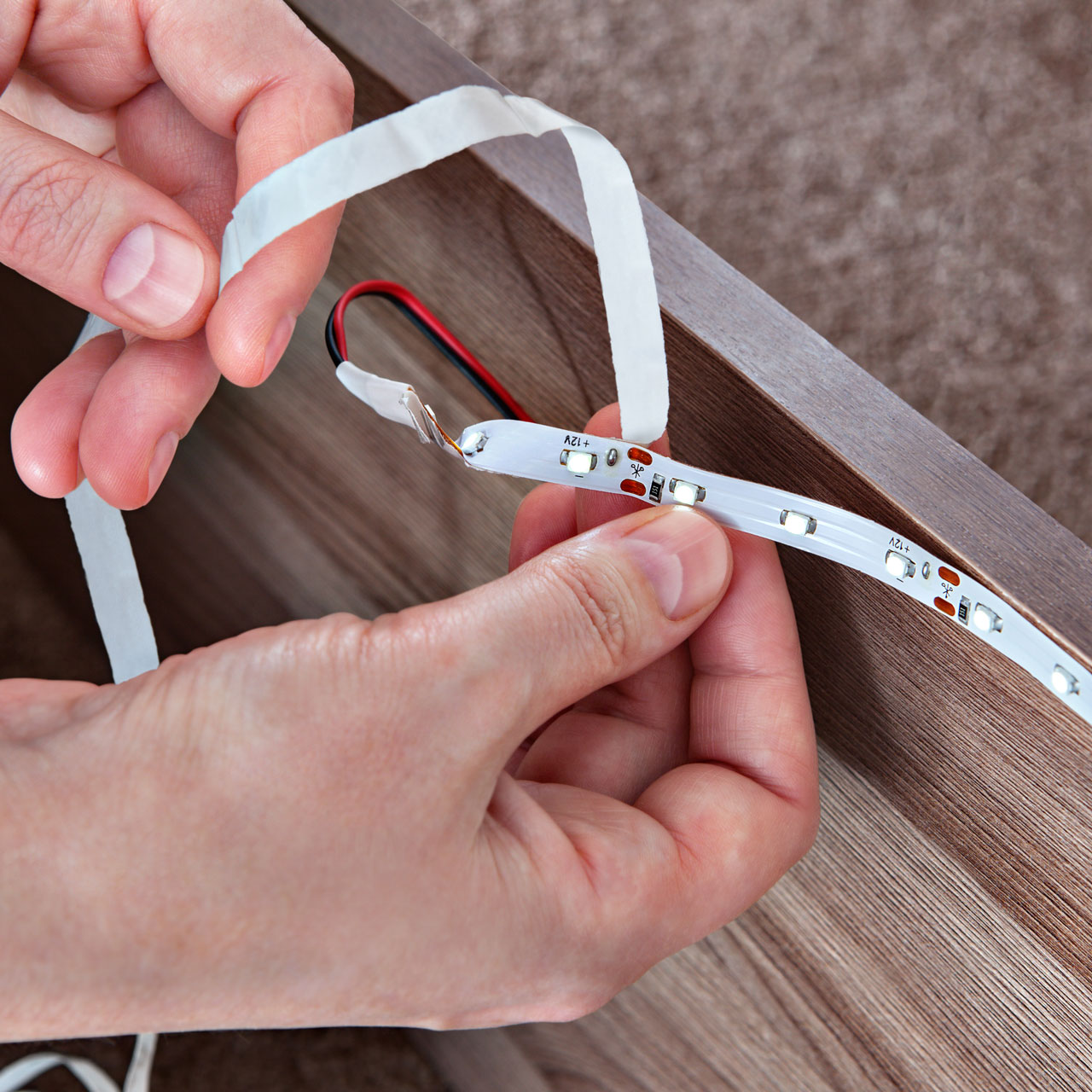
LED strip lights are relatively easy to install. Simply follow the manufacturer’s instructions or use the following general steps as a guide:
- Plan Your Layout: Measure the area where you want to install the LED strip lights and plan the layout, considering where to place the power source and any connectors needed for corners or bends.
- Clean the Surface: Ensure the surface where you’ll be mounting the LED strips is clean, dry, and free from dust or grease. This will help the adhesive backing adhere firmly.
- Cut to Size: Cut the LED strip lights to the desired length at designated cut points using sharp scissors or a craft knife. Be careful to cut along the marked lines to avoid damaging the circuitry.
- Peel Off Backing: Carefully peel off the adhesive backing from the strip lights, revealing the sticky surface.
- Attach to Surface: Press the adhesive side of the LED strip lights firmly onto the cleaned surface, ensuring they are properly aligned and secure.
- Connect Power Source: Depending on the type of LED strip lights, connect the power source to the designated input connector, ensuring proper polarity.
- Test the Lights: Turn on the power source to test the LED strip lights and ensure they work correctly before finalising the installation.
- Secure Wires: Use cable clips or adhesive cable holders to secure any loose wires and prevent tripping hazards.
- Enjoy Your Lighting: Once everything is installed and working correctly, sit back and enjoy your newly illuminated space!
Integrating Smart Home Technology
Integrating smart home technology with LED strip lights allows effortless customisation of settings. To benefit from these smart lighting solutions, you’ll need to choose LED strips compatible with your existing smart home devices.
Connect LED strips to a compatible smart home hub or app to remotely control brightness, colour, and scheduling. Create different lighting scenes for activities like movie nights or parties with ease. Select compatible LED strips and connect to the hub following the manufacturer’s integration instructions. Download the app, pair LED strips, and customise settings for personalised scenes. Voice control may be available through virtual assistants like Amazon Alexa or Google Assistant for added convenience.
Safety Considerations and Maintenance
When working with LED strip lights, it’s crucial to prioritise safety to prevent electrical hazards. Consider the following safety tips:
- Turn Off Power: Always turn off the power source before handling LED strip lights to prevent the risk of electric shock.
- Follow Instructions: Carefully follow manufacturer instructions when cutting or connecting LED strips to avoid damaging the circuitry.
- Mind Voltage Requirements: Be mindful of voltage requirements and never exceed the maximum load capacity to prevent overheating and fire hazards.
- Secure Wiring: Properly secure all wiring and connections to prevent tripping hazards and reduce the risk of accidental damage.
- Inspect Regularly: Regularly inspect LED strips for signs of wear or damage and promptly replace faulty components to maintain safety.
To ensure the longevity and optimal performance of LED strip lights, regularly clean the surface where they are installed to prevent dust buildup, which can affect brightness and heat dissipation. Additionally, periodically inspect the wiring and connections for any signs of wear or damage and promptly replace faulty components to maintain safety and functionality.
Conclusion
LED strip lights are versatile and essential in modern home decor, offering flexibility and aesthetic appeal. By following the tips and recommendations provided, you can harness the full potential of LED strip lights to transform your living spaces into inviting and stylish environments. Get creative and explore the endless possibilities of illuminating your space with LED strip lights, adding a touch of personality and ambience to every corner of your home!
Recent Posts
-
The Importance of High-Quality Window Hardware for Home Security
Ensuring the safety of your home involves more than just locking doors; windows also play a crucial …28th Mar 2025 -
2025 Interior Design & Lighting Trends: Aesthetics & Effects
As we move into spring 2025, interior design is undergoing a transformation where aesthetics and li …18th Mar 2025 -
Enhancing Your Home: A Comprehensive Guide to Selecting and Upgrading Door Hardware
Enhancing your home’s aesthetic appeal often hinges on the finer details, with door hardware p …10th Mar 2025

